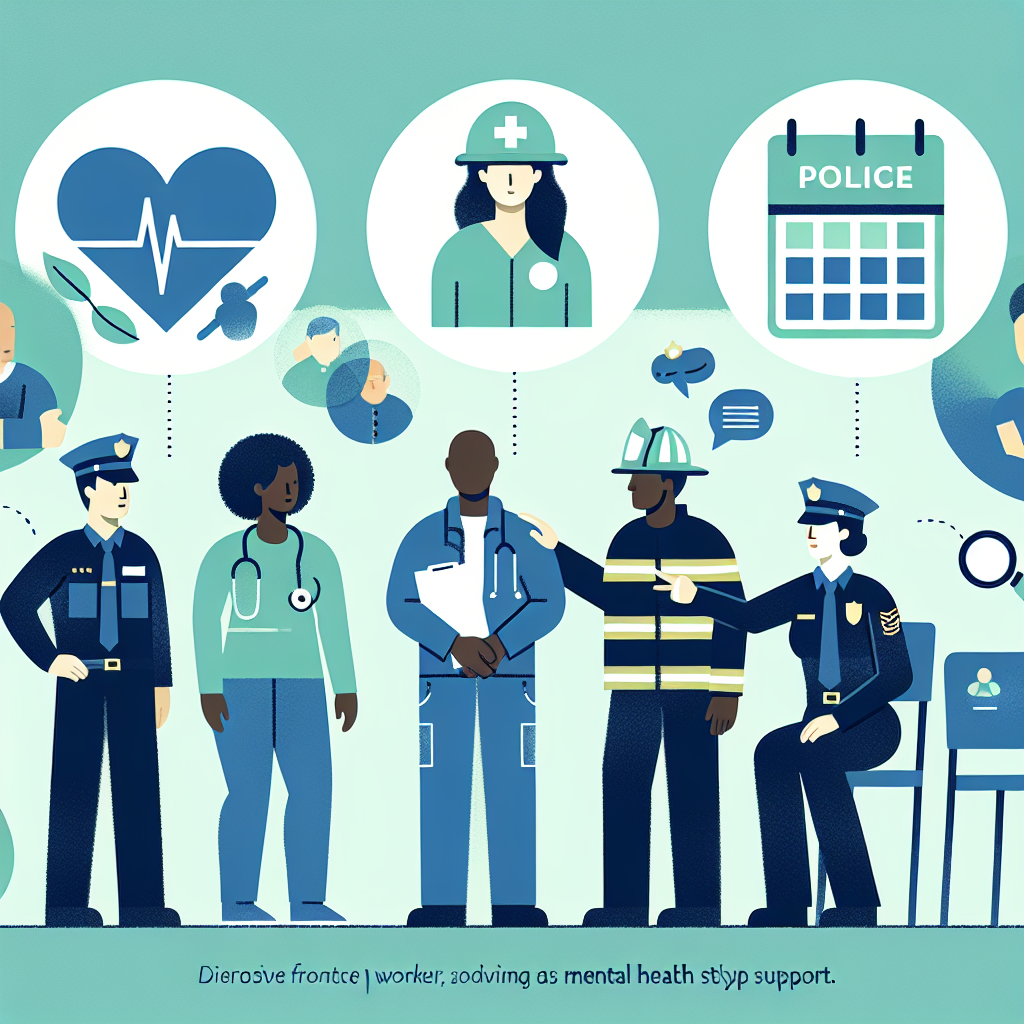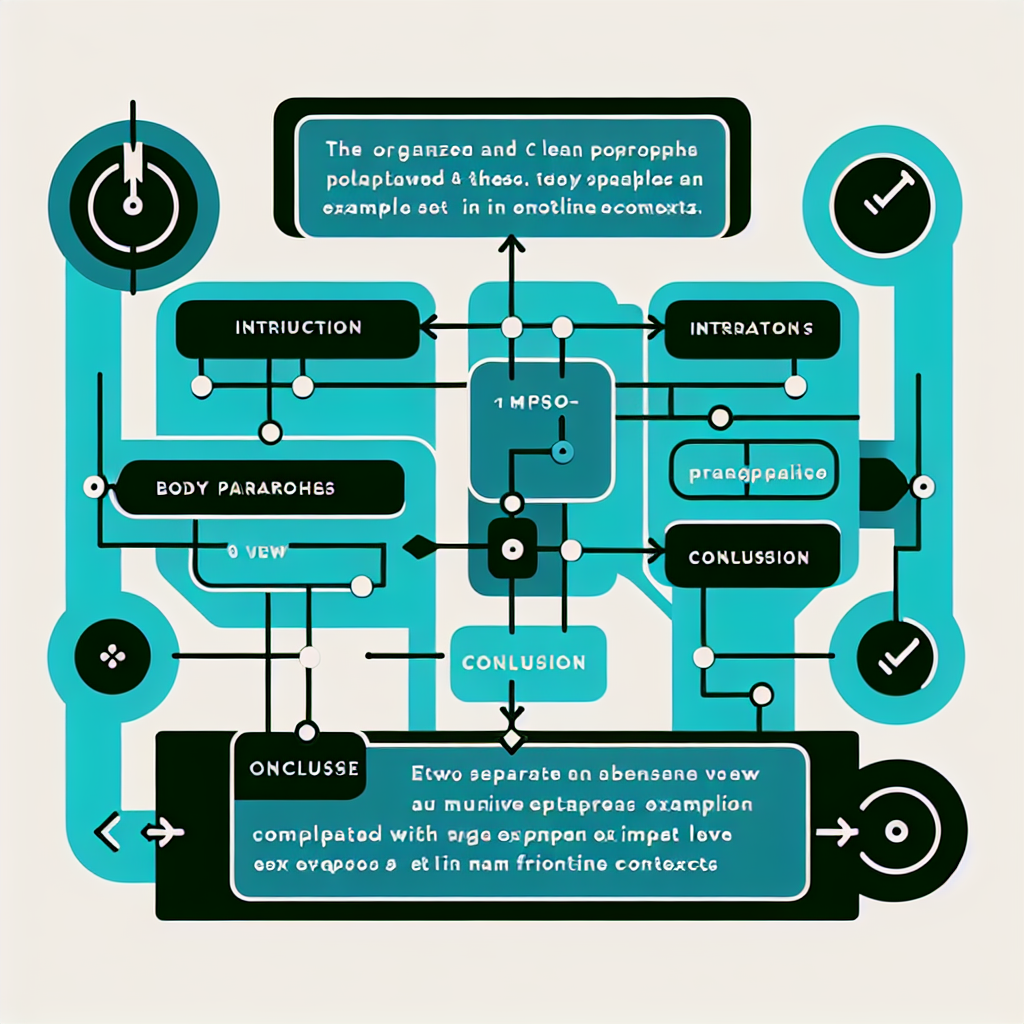Mở bài
Chủ đề How To Support Mental Health In Frontline Workers chạm tới một vấn đề rất “thi thật”: sức khỏe tinh thần trong môi trường làm việc áp lực cao (y bác sĩ, cứu hỏa, công an, nhân viên dịch vụ khẩn cấp). Trong các đề thi IELTS Writing Task 2 gần đây, những câu hỏi xoay quanh stress nghề nghiệp, phúc lợi nhân viên, và trách nhiệm của nhà tuyển dụng xuất hiện với tần suất ổn định. Bài viết này giúp bạn làm chủ chủ đề bằng cách: cung cấp 3 bài mẫu ở các mức Band 5-6, 6.5-7, 8-9; phân tích chấm điểm chi tiết; bảng từ vựng chủ điểm; các cấu trúc điểm cao; và checklist tự đánh giá.
Nội dung bài viết
- Mở bài
- 1. Đề Bài và Phân Tích: how to support mental health in frontline workers (Work–Health)
- 2. Bài Mẫu Band 8-9
- Phân Tích Band Điểm
- Tại Sao Bài Này Đạt Điểm Cao
- 3. Bài Mẫu Band 6.5-7
- Phân Tích Band Điểm
- So Sánh Với Bài Band 8-9
- 4. Bài Mẫu Band 5-6
- Phân Tích Band Điểm
- Học Từ Những Lỗi Sai
- Cách Cải Thiện Từ Band 6 Lên Band 7
- 5. Từ Vựng Quan Trọng cho how to support mental health in frontline workers
- 6. Cấu Trúc Câu Điểm Cao
- 7. Checklist Tự Đánh Giá
- Kết bài
Một số đề thi thực tế đã được xác minh:
- Some people believe employers should be responsible for the well-being of their employees, while others think it is the individual’s responsibility. Discuss both views and give your opinion. (Đăng trên IELTS-Blog, chuyên mục Recent Exam Questions)
- Governments should invest more in preventive healthcare, including mental health, rather than treatment. To what extent do you agree or disagree? (Chủ đề trong danh sách Health Essay Questions – IELTS Liz)
- Stress-related illnesses are increasing at the workplace. What are the causes, and what measures could be taken? (Xuất hiện trong tuyển tập đề luyện chính thức của British Council/IDP theo chủ đề Work and Health)
Bạn sẽ học: cách phân tích đề, chiến lược lập luận, phát triển ví dụ phù hợp bối cảnh Việt Nam, và cách dùng từ vựng học thuật để ghi điểm trong IELTS Writing Task 2.
 Cách hỗ trợ sức khỏe tinh thần cho nhân viên tuyến đầu trong IELTS Writing Task 2
Cách hỗ trợ sức khỏe tinh thần cho nhân viên tuyến đầu trong IELTS Writing Task 2
1. Đề Bài và Phân Tích: how to support mental health in frontline workers (Work–Health)
Some people believe employers should be responsible for the well-being of their employees, while others argue it is the individual’s responsibility. Discuss both views and give your own opinion.
Dịch đề: Một số người tin rằng nhà tuyển dụng phải chịu trách nhiệm cho sự an toàn và phúc lợi (bao gồm sức khỏe tinh thần) của nhân viên, trong khi người khác cho rằng đó là trách nhiệm của chính mỗi cá nhân. Hãy thảo luận cả hai quan điểm và đưa ra ý kiến của bạn.
Phân tích đề bài:
- Dạng câu hỏi: Discuss both views and give your opinion. Bạn cần:
- Trình bày cả hai quan điểm với lập luận và ví dụ.
- Nêu rõ quan điểm cá nhân nhất quán, xuyên suốt.
- Thuật ngữ quan trọng:
- well-being: phúc lợi/sức khỏe tổng thể (gồm thể chất lẫn tinh thần).
- responsibility: phạm vi trách nhiệm pháp lý, đạo đức, và vận hành của doanh nghiệp/cá nhân.
- frontline/high-stress roles: các vị trí tuyến đầu, áp lực cao (y tế, cứu hỏa, cảnh sát…).
- Lỗi thường gặp:
- Lệch chủ đề sang tiền lương/phúc lợi nói chung, không tập trung khía cạnh mental health.
- Thiếu cân bằng hai phía, hoặc ý kiến cá nhân không rõ ràng.
- Ví dụ chung chung, thiếu tính “thực thi” (actionable) như chương trình debriefing, peer support, rota design.
- Cách tiếp cận chiến lược:
- Dùng cấu trúc so sánh: nghĩa vụ pháp lý của doanh nghiệp vs tính tự chủ của cá nhân.
- Lồng ghép bối cảnh frontline workers để tăng tính cụ thể.
- Chốt quan điểm “shared responsibility” và đề xuất giải pháp thực tiễn: counselling, peer support, shift rotation, stigma reduction.
 Dàn ý bài luận IELTS Task 2 về sức khỏe tinh thần và trách nhiệm nhà tuyển dụng
Dàn ý bài luận IELTS Task 2 về sức khỏe tinh thần và trách nhiệm nhà tuyển dụng
2. Bài Mẫu Band 8-9
Bài Band 8-9 thể hiện: lập luận sâu, ví dụ cụ thể, kiểm soát ngữ pháp linh hoạt, từ vựng chính xác, và mạch lạc sắc nét.
Essay (290–310 words):
Frontline occupations such as emergency medicine and law enforcement are uniquely exposed to trauma and relentless time pressure. While some argue that personal resilience should be the first line of defence, I contend that employers bear primary responsibility for creating conditions where staff can psychologically thrive.
On the one hand, individual agency matters. Workers can cultivate sleep hygiene, physical exercise, and mindfulness to buffer stress. They can also seek counselling when early warning signs appear. However, such self-help strategies are fragile when deployed in toxic systems—no amount of meditation offsets a rota that repeatedly schedules twelve-hour night shifts. This is why a narrow focus on personal grit risks “victim-blaming” and ignores structural stressors.
By contrast, employers control levers that shape mental health at scale. They can implement evidence-based rota design with adequate recovery windows, cap overtime, and ensure safe staffing ratios. Psychological safety can be institutionalised through confidential debriefings after critical incidents and regular access to trained counsellors. In addition, peer-support programmes reduce stigma and encourage help-seeking, while leadership training ensures that supervisors recognise burnout precursors and respond early. Crucially, these measures are not merely ethical; they are economically rational, as reduced absenteeism and turnover often offset programme costs.
That said, a shared-responsibility model is optimal: employers engineer humane systems; individuals engage with support and maintain healthy routines. Yet, because power asymmetries favour organisations—especially in high-pressure frontline settings—the onus lies first with employers to set the baseline right. When the system is safe by design, individual efforts become potent rather than performative.
In conclusion, although personal habits contribute to resilience, the decisive determinants of mental health for frontline workers are organisational. Employers should therefore lead with structural protections—balanced rotas, resourced teams, and stigma-free access to support—into which personal strategies can seamlessly integrate.
Phân Tích Band Điểm
| Tiêu chí | Band | Nhận xét |
|---|---|---|
| Task Response (Hoàn thành yêu cầu) | 8.5 | Trả lời cân bằng hai phía, quan điểm rõ ràng “shared responsibility” với trọng tâm doanh nghiệp; đưa giải pháp cụ thể và hợp lý cho frontline workers. Phát triển ý sâu với tính thực thi. |
| Coherence & Cohesion (Mạch lạc & Liên kết) | 8.0 | Mở–Thân–Kết logic; chủ đề mỗi đoạn rõ; dùng devices như By contrast, That said, Yet hợp lý. Liên kết ý mượt, không lạm dụng từ nối. |
| Lexical Resource (Từ vựng) | 8.5 | Từ vựng chính xác: rota design, psychological safety, debriefings, stigma, absenteeism, power asymmetries. Collocations tự nhiên, ít lặp. |
| Grammatical Range & Accuracy (Ngữ pháp) | 8.0 | Câu phức, mệnh đề quan hệ, đảo ngữ nhẹ và nhấn mạnh hiệu quả. Lỗi nếu có rất nhỏ, không ảnh hưởng nghĩa. |
Tại Sao Bài Này Đạt Điểm Cao
- Luận điểm trung tâm rõ: employers giữ vai trò quyết định vì họ kiểm soát “structural stressors”.
- Ví dụ cụ thể, khả thi: rota design, cap overtime, debriefings, peer-support, leadership training.
- Từ vựng học thuật chuẩn chủ đề, dùng đúng ngữ cảnh.
- So sánh “individual agency” vs “system design” tạo chiều sâu lập luận.
- Kết nối lợi ích đạo đức với hiệu quả kinh tế, tăng sức thuyết phục.
- Dẫn dắt mạch lạc với chuyển đoạn tự nhiên.
- Ngữ pháp linh hoạt, nhấn mạnh bằng cấu trúc song hành và mệnh đề phụ.
[internal_link: problem-solution-essay]
[internal_link: ielts-writing-task-2-health-topic]
[internal_link: linking-words-ielts]
3. Bài Mẫu Band 6.5-7
Đặc điểm: trả lời đúng trọng tâm, có quan điểm; lập luận chưa thật sâu, một vài lỗi từ vựng/biểu đạt nhẹ; liên kết ổn.
Essay (255–275 words):
Many people argue that employees themselves should manage stress through better habits, whereas others believe employers must protect staff well-being, especially in high-pressure frontline jobs. I think both sides share responsibility, but organisations should take the lead.
Individuals can do simple things such as regular exercise, proper sleep, and time management. These actions can reduce daily anxiety and help people concentrate at work. For example, hospital interns who plan their study time and short breaks often feel more in control. However, these strategies have clear limits when shifts are too long or unpredictable.
On the employer side, companies and public institutions have more power to change conditions. They can hire enough people to prevent chronic overtime and design fair schedules, especially for emergency departments. Moreover, it is helpful to provide confidential counselling and peer-support groups after critical events. When managers receive training to identify burnout signs, they can intervene earlier and avoid more serious problems. These steps do not just protect mental health; they also reduce absenteeism and turnover, which is financially positive.
In my opinion, a balanced model works best: employees try to maintain healthy routines, while employers create a safer system that encourages people to seek help. Since frontline workers usually have little control over their schedules, employers should set the foundation for well-being first.
To conclude, both personal effort and organisational policies matter, but without structural support from employers, individual strategies cannot succeed for long in frontline environments.
Phân Tích Band Điểm
| Tiêu chí | Band | Nhận xét |
|---|---|---|
| Task Response (Hoàn thành yêu cầu) | 7.0 | Trình bày cả hai phía, có quan điểm rõ; ví dụ phù hợp; giải pháp cụ thể nhưng chưa đa tầng như bài Band 8-9. |
| Coherence & Cohesion (Mạch lạc & Liên kết) | 7.0 | Bố cục chuẩn; từ nối cơ bản For example, Moreover, while dùng đúng; chuyển ý mượt nhưng ít đa dạng dụng cụ liên kết cao cấp. |
| Lexical Resource (Từ vựng) | 6.5 | Dùng đúng các từ chủ điểm (counselling, peer-support, burnout); một số collocations còn phổ thông; phạm vi từ chưa thật rộng. |
| Grammatical Range & Accuracy (Ngữ pháp) | 6.5 | Câu phức có nhưng chưa nhiều; kiểm soát ngữ pháp khá, lỗi nhỏ không đáng kể; ít cấu trúc nhấn mạnh/tinh tế. |
So Sánh Với Bài Band 8-9
- Bài Band 8-9 có chiều sâu lập luận hệ thống vs cá nhân rõ ràng hơn và đưa thêm góc nhìn kinh tế, quản trị.
- Vốn từ nâng cao và collocations chuyên ngành phong phú hơn.
- Cấu trúc câu đa dạng hơn: mệnh đề quan hệ, cụm phân từ, nhấn mạnh, đảo ngữ.
- Kết nối ý bằng thiết bị liên kết nâng cao thay vì chỉ các từ nối cơ bản.
4. Bài Mẫu Band 5-6
Đặc điểm: đúng chủ đề nhưng phát triển ý còn chung chung; lỗi mạo từ, thì, giới từ; từ vựng hạn chế, lặp.
Essay (255–265 words):
Some people say workers must take care of their own mental health, and others say employers should do this. I believe both sides are important, especially for frontline workers like nurses and police.
Workers can try to sleep well and do exercise to reduce stress. They can also talk with friends when they feel bad. In the another side, this is not enough if the company give too many shifts or schedule is always change. People will be tired and cannot focus.
Employers should do more to help. They can provide a counselling and train manager to see signs of burnout. They should also make a fair rota for every staffs and avoid long night shifts too often. If they do this, workers will not absent so much and they will stay in job longer.
In my opinion, both worker and employer share the job. It is better if employer are responsibility for the base system, because they control the schedule and resources. Workers still need to keep healthy habits and ask for help when needed.
In conclusion, individual effort is useful but limited. Employers should take the first step to support mental health in frontline workers by better schedule and services.
Phân Tích Band Điểm
| Tiêu chí | Band | Nhận xét |
|---|---|---|
| Task Response (Hoàn thành yêu cầu) | 6.0 | Trả lời đúng hướng, có quan điểm; ví dụ còn chung; giải pháp chưa chi tiết; lập luận chưa sâu. |
| Coherence & Cohesion (Mạch lạc & Liên kết) | 5.5 | Liên kết cơ bản; từ nối hạn chế; vài chuyển ý đột ngột; lặp từ. |
| Lexical Resource (Từ vựng) | 5.5 | Vốn từ hạn chế; dùng sai mạo từ và danh từ số nhiều; collocations chưa chuẩn. |
| Grammatical Range & Accuracy (Ngữ pháp) | 5.5 | Lỗi mạo từ, chủ-vị, danh từ số nhiều, động từ; câu đơn chiếm đa số. |
Học Từ Những Lỗi Sai
| Lỗi sai | Loại lỗi | Sửa lại | Giải thích |
|---|---|---|---|
| In the another side | Giới từ/mạo từ | On the other hand | Cụm cố định; dùng “on the other hand” để đối lập. |
| the company give too many shifts | Chủ-vị/Thì | the company gives too many shifts | Chủ ngữ số ít “company” → động từ “gives”. |
| schedule is always change | Thì/Thể bị động | the schedule is always changing / is always changed | Thiếu V-ing/bị động đúng; “always changing” mô tả sự thay đổi liên tục. |
| a counselling | Mạo từ/danh từ không đếm được | counselling / a counselling session | “counselling” không đếm được; muốn đếm dùng “session”. |
| train manager | Danh từ số nhiều | train managers | Cần số nhiều vì nói chung. |
| a fair rota for every staffs | Danh từ số nhiều | a fair rota for all staff / for every member of staff | “staff” không đếm được; dùng “all staff” hoặc “member of staff”. |
| workers will not absent so much | Từ loại | workers will not be absent so much | “absent” là tính từ sau “be” hoặc động từ phản thân “absent themselves”. |
| employer are responsibility | Chủ-vị/Từ loại | employers are responsible | “employers” số nhiều; “responsible” là tính từ. |
Cách Cải Thiện Từ Band 6 Lên Band 7
- Mở rộng vốn collocations chủ điểm: psychological safety, confidential debriefing, staffing ratios.
- Dùng cấu trúc câu đa dạng: mệnh đề quan hệ, cụm phân từ, câu nhấn mạnh.
- Ví dụ cụ thể, khả thi: ví dụ về redesign rota, cap overtime, provide 24/7 helpline.
- Kiểm soát ngữ pháp cơ bản: mạo từ, số ít/số nhiều, thì tiếp diễn/bị động.
- Tăng liên kết logic: However, By contrast, Consequently, Not only…but also.
5. Từ Vựng Quan Trọng cho how to support mental health in frontline workers
| Word/Phrase | POS | IPA | Nghĩa tiếng Việt | Example (EN) | Collocations |
|---|---|---|---|---|---|
| frontline workers | n | /ˈfrʌnt.laɪn ˌwɜːkəz/ | nhân viên tuyến đầu | Frontline workers face intense time pressure. | frontline roles, frontline settings |
| burnout | n | /ˈbɜːnaʊt/ | kiệt sức nghề nghiệp | Early debriefing reduces burnout. | burnout risk, burnout symptoms |
| roster/rota design | n | /ˈrəʊstə(r)/ | thiết kế lịch trực | Rota design must allow recovery time. | fair rota, rotating shifts |
| psychological safety | n | /ˌsaɪkəˈlɒdʒɪkl ˈseɪfti/ | an toàn tâm lý | Psychological safety encourages help-seeking. | foster psychological safety |
| debriefing | n | /ˌdiːˈbriːfɪŋ/ | họp rút kinh nghiệm | Confidential debriefing follows critical incidents. | critical-incident debriefing |
| counselling | n | /ˈkaʊns(ə)lɪŋ/ | tư vấn tâm lý | Staff have access to counselling. | counselling service/session |
| peer support | n | /pɪə səˈpɔːt/ | hỗ trợ đồng nghiệp | Peer support reduces stigma. | peer-support program |
| stigma | n | /ˈstɪɡmə/ | kỳ thị | Reducing stigma improves utilisation of services. | stigma reduction |
| staffing ratio | n | /ˈstɑːfɪŋ ˈreɪʃiəʊ/ | tỷ lệ nhân sự | Safe staffing ratios prevent overload. | safe staffing ratios |
| absenteeism | n | /ˌæbˈs(ə)ntiːɪzəm/ | vắng mặt thường xuyên | Policies lower absenteeism. | reduce absenteeism |
| evidence-based | adj | /ˈevɪdəns beɪst/ | dựa trên bằng chứng | We adopted evidence-based schedules. | evidence-based policy/practice |
| resilience | n | /rɪˈzɪliəns/ | khả năng hồi phục | Training can build resilience. | build resilience |
| not only…but also | linker | — | không chỉ… mà còn | Not only staff but also patients benefit. | not only X but also Y |
| by contrast | linker | — | trái lại | By contrast, systemic fixes endure. | by contrast with |
| in the long run | phrase | — | về lâu dài | In the long run, costs fall. | in the short/long run |
Lưu ý phát âm: luyện theo IPA để tránh nhầm “counselling” /ˈkaʊn…/ và “council” /ˈkaʊn.səl/.
6. Cấu Trúc Câu Điểm Cao
- Câu phức với mệnh đề phụ thuộc
- Công thức: Mệnh đề phụ thuộc + mệnh đề chính (hoặc ngược lại) để nêu điều kiện, nhượng bộ, nguyên nhân.
- Ví dụ từ bài Band 8-9: While some argue that personal resilience should be the first line of defence, I contend that employers bear primary responsibility…
- Vì sao ghi điểm: Tạo lập luận cân bằng, nhượng bộ tinh tế.
- Ví dụ bổ sung:
- Although counselling is available, many staff still avoid it due to stigma.
- Because shifts are unpredictable, individual routines often collapse.
- Lỗi thường gặp: Thiếu dấu phẩy sau mệnh đề phụ thuộc ở đầu câu.
- Mệnh đề quan hệ không xác định (non-defining relative clauses)
- Công thức: Danh từ, which/who + mệnh đề, để thêm thông tin bổ sung.
- Ví dụ: Psychological safety can be institutionalised through confidential debriefings, which normalise help-seeking.
- Vì sao ghi điểm: Bổ sung thông tin mượt, tăng mật độ ý.
- Ví dụ bổ sung:
- The new rota, which was designed by clinicians, reduced fatigue.
- Peer support, which is cost-effective, scales quickly.
- Lỗi thường gặp: Quên dấu phẩy; dùng “that” thay “which” trong mệnh đề không xác định.
- Cụm phân từ (participle phrases)
- Công thức: V-ing/V-ed mở đầu hoặc chen giữa câu để nén thông tin.
- Ví dụ: Reducing stigma, organisations make early help-seeking more likely.
- Vì sao ghi điểm: Tăng độ cô đọng, nhịp văn tự nhiên.
- Ví dụ bổ sung:
- Cappping overtime, managers protect staff recovery time.
- Designed properly, rotas prevent chronic fatigue.
- Lỗi thường gặp: Treo chủ ngữ (dangling participle).
- Câu chẻ (Cleft sentences)
- Công thức: It is/was + thành phần nhấn mạnh + that/who + mệnh đề.
- Ví dụ: It is employers that control the levers shaping mental health at scale.
- Vì sao ghi điểm: Nhấn mạnh luận điểm then chốt.
- Ví dụ bổ sung:
- It is structural change that determines long-term outcomes.
- It was the rota redesign that cut absenteeism.
- Lỗi thường gặp: Dùng thừa “that”; sai thì của động từ to be.
- Câu điều kiện nâng cao (mixed/third)
- Công thức: If + past perfect, would + base V (kết nối hiện tại–quá khứ).
- Ví dụ: If rotas had been humane, many staff would not be burnt out today.
- Vì sao ghi điểm: Thể hiện quan hệ nhân–quả phức tạp theo thời gian.
- Ví dụ bổ sung:
- If leaders had intervened earlier, morale would be higher now.
- If counselling had been confidential, more staff would attend.
- Lỗi thường gặp: Nhầm would have V3 với would V.
- Đảo ngữ để nhấn mạnh
- Công thức: Not until/Not only/Under no circumstances + trợ động từ + S + V.
- Ví dụ: Not only are these measures ethical, they are economically rational.
- Vì sao ghi điểm: Tạo nhấn mạnh hùng biện, tăng tính học thuật.
- Ví dụ bổ sung:
- Under no circumstances should staffing ratios be ignored.
- Only by redesigning rotas can burnout be reduced.
- Lỗi thường gặp: Quên trợ động từ sau trạng ngữ đảo.
7. Checklist Tự Đánh Giá
Trước khi viết:
- Xác định dạng bài: discuss both views + opinion.
- Gạch 3-4 giải pháp thực tiễn cho how to support mental health in frontline workers.
- Chọn lập luận chính và ví dụ cụ thể (rota, debriefing, counselling).
Trong khi viết:
- Mỗi đoạn 1 ý chính, có topic sentence rõ.
- Đưa bằng chứng/ví dụ cụ thể, tránh nói chung chung.
- Dùng từ nối đa dạng: By contrast, Consequently, That said.
Sau khi viết:
- Kiểm tra mạo từ a/an/the, số ít/số nhiều (staff, data), chủ-vị.
- Soát collocations: confidential counselling session, safe staffing ratios.
- Bảo đảm 250–320 từ; quan điểm nhất quán.
Quản lý thời gian:
- 5 phút phân tích đề + dàn ý.
- 25 phút viết 4 đoạn.
- 5 phút soát lỗi ngữ pháp, mạo từ, chính tả.
Kết bài
Tóm lại, chủ đề how to support mental health in frontline workers thường xuất hiện dưới dạng tranh luận trách nhiệm doanh nghiệp hay cá nhân, hoặc nguyên nhân–giải pháp cho stress nơi làm việc. Để đạt band điểm cao trong IELTS Writing Task 2, bạn cần: phân tích đề chính xác, lập luận cân bằng, ví dụ cụ thể (rota design, debriefing, peer support, counselling), từ vựng học thuật đúng ngữ cảnh, và cấu trúc câu đa dạng. Con đường cải thiện khả thi là luyện viết có mục tiêu, nhận phản hồi trung thực, và sửa lỗi lặp lại.
Hãy thực hành một bài theo dàn ý ở trên và chia sẻ trong phần bình luận để nhận góp ý từ cộng đồng. Với 3–6 tuần luyện tập đều đặn (3–4 bài/tuần), đa số học viên có thể nâng từ 5.5–6.0 lên 6.5–7.0 nếu tập trung vào mạo từ, collocations, và mạch lạc. Tài nguyên nên xem thêm: đề mẫu theo chủ đề Health/Work, danh sách linking words, và các bài mẫu band cao [internal_link: linking-words-ielts], [internal_link: ielts-writing-task-2-health-topic]. Chúc bạn kiên trì luyện tập và đạt mục tiêu band điểm mong muốn.


